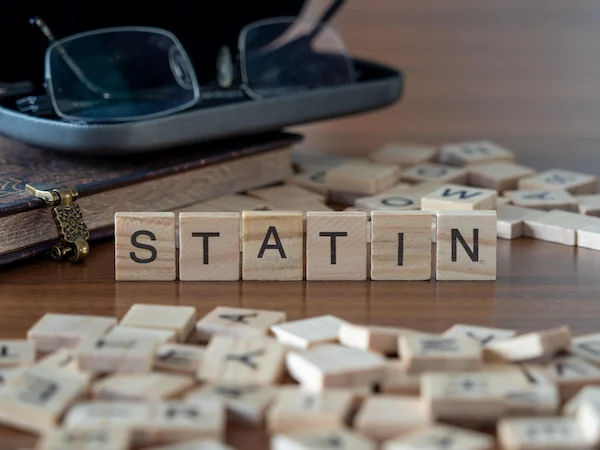10 Best Foods to Lower Cholesterol Naturally
Discover 10 heart health foods for a smart cholesterol diet. Evidence-based picks, easy swaps, and tips to help lower LDL naturally.

Written by Dr. Mohammed Kamran
Reviewed by Dr. Rohinipriyanka Pondugula MBBS
Last updated on 21st Nov, 2025

Introduction: Why This Matters
If you or someone you care about is working to lower LDL (“bad”) cholesterol, small but consistent food choices can make a significant difference. Building meals around heart-friendly ingredients is one of the most reliable ways to support healthier cholesterol levels. When combined with regular physical activity, avoiding smoking, better sleep, and medical guidance, your daily eating pattern becomes a powerful tool in long-term heart protection. This guide outlines ten of the best foods for heart health and practical ways to include them in your routine.
What Food Can Do for Cholesterol?
Food influences cholesterol in several important ways:
- Soluble fibre binds cholesterol in the digestive tract, so less is absorbed.
- Unsaturated fats from plants and fish can help lower LDL when they replace saturated fats.
- Plant sterols and stanols reduce cholesterol absorption.
- Omega-3 fats don’t lower LDL but help reduce triglycerides and support heart health.
Aim for a balanced pattern rich in vegetables, fruits, whole grains, legumes, nuts, seeds, and healthy oils. Many people benefit from about 25–30 grams of fibre per day, including some soluble fibre.Consult a Top General Practitioner for Personalised Advice
The 10 Best Heart Health Foods for a Cholesterol Diet
1) Oats and Barley
Why they help:
Oats and barley supply beta-glucan, a soluble fibre that binds cholesterol in the gut. This gentle, natural mechanism supports healthier LDL levels over time and encourages steadier digestion. Because these grains are filling, they also help manage appetite, which can support healthier eating patterns overall.
Easy ways to eat them:
- Enjoy warm porridge topped with fruit, seeds, and a spoonful of nuts.
- Use barley in soups or mix it with vegetables for a hearty dinner option.
Tip: Less processed versions digest more slowly, keeping you satisfied longer and stabilising energy levels.
2) Beans and Lentils
Why they help:
Their combination of soluble fibre and plant-based protein makes them a standout ingredient in heart-friendly meals. Regularly replacing meat-based dishes with beans or lentils gradually reduces your intake of saturated fat, which supports healthier LDL levels.
Easy ways to eat them:
- Add beans to stews, grain bowls, or wraps.
- Use lentils in curries, soups, or salads for extra texture.
Tip: Variety helps—chickpeas, kidney beans, lentils, and black beans all offer similar benefits.
3) Apples, Citrus, and Berries
Why they help:
Apples, citrus fruits, and berries are rich in pectin and contribute to a higher-fibre diet that supports cholesterol control. Their natural sweetness makes them a great replacement for sugary snacks.
Easy ways to eat them:
- Mix diced apples into porridge or yoghurt.
- Add orange slices to salads for a fresh lift.
- Sprinkle berries over breakfast dishes or blend into smoothies.
Tip: Keeping a bowl of whole fruit visible helps turn them into an easy daily habit.
4) Nuts (Almonds, Walnuts, Pistachios, and More)
Why they help:
Nuts provide a concentrated mix of healthy fats, plant sterols, and fibre. When eaten in moderation, they can replace less healthy snacks that may contain saturated fat or refined sugars. Their versatility makes them easy to include in both sweet and savoury meals.
Easy ways to eat them:
- Use nuts as a crunchy topping for vegetables or grains.
- Pair a small portion with fruit for a balanced snack.
Tip: A small amount goes a long way due to their nutrient density.
5) Fatty Fish (Salmon, Sardines, Mackerel, Trout)
Why they help:
Fatty fish stand out for their omega-3 fats, which support heart health more broadly. Replacing red or processed meats with fish can improve your overall fat intake, providing a gentle shift towards a more heart-friendly eating pattern.
Easy ways to eat them:
- Grill salmon with herbs and lemon.
- Use canned fish as an affordable, easy pantry staple.
Tip: Try alternating different types of fish to keep meals interesting.
6) Extra-Virgin Olive Oil
Why it helps:
This oil adds flavour while supporting healthier cholesterol management. Because it pairs well with many foods—vegetables, grains, and lean proteins—it helps reinforce heart-friendly habits naturally.
Easy ways to eat it:
- Toss roasted vegetables with a drizzle after cooking.
- Make simple dressings with olive oil, herbs, and lemon.
Tip: A little olive oil enhances texture and helps you enjoy more vegetables.
7) Avocados
Why they help:
Their creamy texture makes them an ideal substitute for spreads higher in saturated fat. Avocados also add fibre, supporting fullness and digestive comfort.
Easy ways to eat them:
- Add slices to sandwiches or salads.
- Blend into dips for a smooth, rich texture.
Tip: Using measured portions helps you enjoy them regularly.
8) Soy Foods (Tofu, Tempeh, Edamame, Soy Milk)
Why they help:
Soy foods offer a satisfying alternative to higher-fat animal proteins. By incorporating them into meals, you lower your saturated fat intake naturally while still enjoying balanced, protein-rich dishes.
Easy ways to eat them:
- Add tofu to stir-fries or curry bowls.
- Snack on steamed edamame for a protein boost.
Tip: Try different textures—silken tofu for smoothies, firm tofu for savoury meals.
9) Seeds and Psyllium (Flax, Chia, Ground Seeds, Psyllium Husk)
Why they help:
These seeds add fibre, healthy fats, and texture to everyday meals. Psyllium in particular is a concentrated form of soluble fibre that supports cholesterol management when used consistently.
Easy ways to eat them:
- Mix into porridge, yoghurt, or smoothies.
- Add to homemade energy balls or baked goods.
Tip: Introduce psyllium slowly to avoid digestive discomfort.
10) Foods with Plant Sterols and Stanols
Why they help:
These fortified products offer a convenient way to lower cholesterol absorption when combined with an overall heart-friendly diet. They can help fill the gap on days when fibre intake is lower.
Easy ways to eat them:
- Spread fortified alternatives on whole-grain toast.
- Choose fortified yoghurt for an easy breakfast or snack.
Tip: Use consistently for the best effect.
Simple Daily Swaps That Add Up
Some simple swaps include:
- Swap sugary cereal for oats with berries and nuts.
- Choose bean-and-vegetable bowls over deli meats.
- Replace red meat with salmon or tofu.
- Use olive oil instead of butter.
- Snack on fruit and nuts instead of pastries.
- Select whole grains over refined grains.
Portion Pointers and Safety Notes
The important portion pointers include:
- Fibre: Increase gradually and drink enough water.
- Sodium and sugar: Choose low-sodium beans and limit added sugars.
- Allergies and health conditions: Seek tailored advice where needed.
- Supplements: Discuss any supplements with your healthcare provider first.
A Day on a Cholesterol-Smart Plate
A cholesterol smart plate includes:
- Breakfast: Oats with soy milk, berries, flaxseed, and almonds
- Lunch: Lentil and barley soup plus a salad with olive oil
- Snack: Apple and pistachios
- Dinner: Baked salmon, quinoa, and roasted vegetables
- Dessert (optional): Citrus fruit or berries
Practical Shopping Checklist
A practical shopping checklist includes:
- Whole grains: Oats, barley, quinoa, whole-grain bread
- Legumes: Lentils, chickpeas, black beans
- Produce: Apples, citrus, berries, leafy greens
- Proteins: Fatty fish, tofu, tempeh, edamame
- Healthy fats: Olive oil, avocados, nuts, seeds
- Pantry items: Psyllium husk, herbs, and spices
What to Limit for Better Cholesterol
Things to limit for better cholesterol are:
- Saturated fats: Fatty meats, butter, full-fat dairy
- Trans fats: Avoid products with “partially hydrogenated oils”
- Refined carbs: Sugary drinks, pastries, and processed snacks.
Conclusion
Improving cholesterol through food is most effective when approached as a long-term lifestyle pattern rather than a strict, short-term diet. By choosing heart-healthy ingredients, increasing soluble fibre, and favouring unsaturated fats, you build meals that support better LDL levels and overall wellbeing. Small changes done consistently can lead to meaningful improvements in heart health. Pair these steps with regular activity and medical guidance to achieve the strongest results. Consult a Top General Practitioner for Personalised Advice
Consult a Top General Practitioner for Personalised Advice

Dr. Deeptangshu Ganguly
General Practitioner
12 Years • MBBS , MD (Pharmacology)
Raniganj
The Polyclinic and Pharmacy, Raniganj

Dr. Tapabrata Ray
General Physician/ Internal Medicine Specialist
4 Years • MBBS,DGM,CPMeC,ACMDC
Kolkata
MCR SUPER SPECIALITY POLY CLINIC & PATHOLOGY, Kolkata

Dr. Utsa Basu
Diabetologist
14 Years • MBBS , MD
Barasat
Diab-Eat-Ease, Barasat
(75+ Patients)

Dr. Suvayan Sadhu
General Practitioner
2 Years • MBBS
Kolkata
GRD POLYCLINIC, Kolkata

Dr. Dixant Chhikara
General Practitioner
4 Years • MBBS
Delhi
SKYNN CARE, Delhi
Consult a Top General Practitioner for Personalised Advice

Dr. Deeptangshu Ganguly
General Practitioner
12 Years • MBBS , MD (Pharmacology)
Raniganj
The Polyclinic and Pharmacy, Raniganj

Dr. Tapabrata Ray
General Physician/ Internal Medicine Specialist
4 Years • MBBS,DGM,CPMeC,ACMDC
Kolkata
MCR SUPER SPECIALITY POLY CLINIC & PATHOLOGY, Kolkata

Dr. Utsa Basu
Diabetologist
14 Years • MBBS , MD
Barasat
Diab-Eat-Ease, Barasat
(75+ Patients)

Dr. Suvayan Sadhu
General Practitioner
2 Years • MBBS
Kolkata
GRD POLYCLINIC, Kolkata

Dr. Dixant Chhikara
General Practitioner
4 Years • MBBS
Delhi
SKYNN CARE, Delhi
More articles from General Medical Consultation
Frequently Asked Questions
1) How quickly can food changes lower LDL cholesterol?
Many people notice improvements within 4–12 weeks, especially when they add more soluble fibre, reduce saturated fat, and choose more whole foods. Responses vary, and some individuals still require medication.
2) Do eggs raise cholesterol?
For most people, dietary cholesterol has less impact than the saturated fat content of meals. Many adults can include eggs in moderation. Those with cardiovascular conditions should ask their clinician for tailored advice.
3) Are coconut oil and butter acceptable?
Both are high in saturated fat, which can raise LDL. For routine cooking, choose olive oil or other unsaturated fats.
4) Do I need supplements to lower cholesterol?
Some people benefit from medication or specific supplements, but many can improve their cholesterol through diet and lifestyle alone. Always speak with your clinician before taking supplements.
5) Is a plant-based or Mediterranean diet better?
Both patterns can support healthy cholesterol levels. The best choice is the one you enjoy and can sustain long-term.




